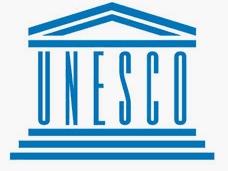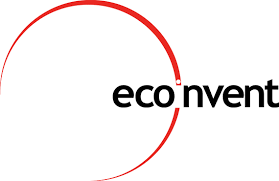
Marathon running leaves a significant carbon footprint regarding CO2 emissions; for example, 37 percent of New York Marathon participants travel internationally to New York. The aim of this study is to estimate the CO2 footprint of a person training and competing in a marathon; we will also propose methods to minimize the CO2 footprint because of transportation.
In addition, we also examine the influence of food practices and hygiene on training and racing a marathon. Methods: We estimated the annual carbon footprint of one person taking part in a marathon. We considered all training, racing, and travelling (local and international) for one person (we are going to give him the first name of “Henri”), and then compared his CO2 footprint with his colleagues playing tennis and soccer. The excess CO2 footprint whilst running and for shoes, clothing, books, magazines, insurance, travel, hygiene, laundry, and resources for electronics and additional food consumed were calculated. For competitions, we estimated and compared the CO2 emission from transportation to national vs. international marathon (New York).
Results: We estimated that our runner emitted 4.3 tons of CO2 equivalent (CO2e), including all greenhouse gases. A transatlantic flight to New York corresponded to 3.5 tons CO2, which is 83% of the annual carbon footprint of an average French citizen which is about 11 tons CO2e/year. This leads to a sudden 40% increase in Henri’s annual carbon footprint.
Conclusions: By focusing on the additional carbon footprint from one year of marathon training and racing, and traveling locally versus internationally, this sport still has a potentially significant carbon footprint that runners and race organizers ought to consider. We wanted to answer a growing question of marathon runners who are wondering about the carbon footprint of their sports practice in following with a new environmentalist trend that considers not traveling anymore to participate in marathons and to stay local. However, the representativeness in the selection of calculation objectives is very low. There is no need for statistics since this study is a theoretical simulation of traditional training and competition practices of marathon runners.


Making the case for inclusive quality physical education policy development: a policy brief
Sustainable development starts with active, healthy and physically engaged citizens. The importance of good health and the inadequacies of existing health infrastructures have been brought into sharp focus during the COVID pandemic. Addressing health gaps will be critical to recovery efforts. Schools are a natural entry-point to trigger transformative behavioural shifts related to healthy lifestyles.
As such, investment in an innovative and integrated delivery of education, exercise and good nutrition should be considered as a key component of recovery efforts.
It is well known that individual engagement in targeted, values-based interventions in sport, physical education and physical activity increases physical and mental health. Engagement in active, values-infused learning environments, like quality physical education classes, also boosts intellectual, individual and emotional capital.
This translates to an acceleration of socio-emotional skills acquisition that grow the confidence of students and, in turn, build the psycho-social resilience necessary to respond creatively and effectively to future crises whether related to health, employment or inclusion.





How to influence the development of quality physical education policy: a policy advocacy toolkit for youth
This toolkit is designed to support young people advocate for and effectively contribute to the development of quality physical education (QPE) policy. Youth organizations and other civil society actors who work in youth engagement and/or education, physical activity and sport and who are not familiar with policy advocacy may also find the content useful.
This toolkit offers general principles for successful policy advocacy that can be adapted based on what best suits your national context and specific policy development processes. You will find sections presenting the value of youth engagement in policy development, tried and tested techniques to inspire impact-oriented advocacy strategies and practical checklists to navigate physical education (PE) policy development processes.
The content of the toolkit is particularly relevant for sport and QPE policy advocacy as it contains specific data on the benefits of investing, subject-specific resources and concrete examples from the QPE policy revision project. The ideas and strategies outlined can also be used to support youth engagement in the development of overlapping policy frameworks e.g. health, education, gender equality.
Toolkit users are encouraged to take an inter-sectoral and intersectional approach to PE policy advocacy. Coalition-building across sport, education and health sectors will help pool limited capacities and ensure a coherent national vision in terms of policy design, commitments and budgeting. Inter-sectoral coherence will also maximize impact at the local and national levels.
The toolkit draws directly on the findings of UNESCO’s Quality Physical Education Policy Project. You can learn more about the project on the dedicated webpage.
Youth were key stakeholders in the national policy revision exercises carried out within the framework of the QPE Policy Project. The project evaluation highlighted the key contributions of inter-sectoral partnerships and participatory policy development processes in the elaboration of robust, inclusive and impact-oriented policy documents.





The online carbon footprint calculation tools enable you to calculate your personal or business carbon footprint.
The Carbon Calculator follow the methodology outlined by the UK Government, and currently using the "Greenhouse gas reporting: conversion factors 2020".
The calculator uses emissions factors which take account of all greenhouse gases (i.e. CO2, N2O, methane etc.) released by the activities, with the results presented in units of metric tonnes of CO2 equivalent (CO2e).
In most cases that means the results will be slightly higher than if calculating CO2 only. The calculations of emissions from fuels are Scope 1, meaning the direct GHG emissions from the combustion of the fuels.
The calculations do not include the Well to Tank (WTT) Scope 3 Emissions associated with extraction, refining, distribution, storage and retail of the fuels.
The following elements can be measured in the calculator:
- House/Buildings
- Flights
- Car/Motorbike
- Bus/Rail
- Secondary Footprint (this is a measure of the emissions caused through the manufacture, delivery and disposal of products and services we buy. Most carbon footprint calculators ignore this part of your footprint, but without it you may risk under estimating your total footprint quite considerably).





The World Food LCA Database (WFLDB) is a comprehensive international life cycle inventory database and a global initiative led by Quantis in partnership with leaders in the agri-food sector.
WFLDB was launched in 2012 in response to the growing need for reliable, transparent and coherent environmental data and a consistent methodology for assessing the impacts of agri-food products.





ICAO Carbon Emissions Calculator
The International Civil Aviation Organisation (ICAO) is funded and directed by 193 national governments to support their diplomacy and cooperation in air transport as signatory states to the Chicago Convention (1944).
ICAO has developed a methodology to calculate the carbon dioxide emissions from air travel for use in offset programmes.
The ICAO Carbon Emissions Calculator allows passengers to estimate the emissions attributed to their air travel. It is simple to use and requires only a limited amount of information from the user.
Summary of the methodology used:
CO2 Emissions per passenger take into consideration the load factor and are based only on passenger operations (i.e. fuel burn associated with belly freight is not considered). The steps for the estimation of CO2 emissions per passenger:
- Step 1: Estimation of the aircraft fuel burn
- Step 2: Calculation of the passengers' fuel burn based on a passenger/freight factor which is derived from RTK data
- Step 3: Calculation of seats occupied (assumption: all aircraft are entirely configured with economic seats). Seat occupied = Total seats * Load Factor
- Step 4: CO2 emissions per passenger = (Passengers' fuel burn * 3.16) / Seat occupied


One of the major features of IDEA is that it covers all business economic activities in Japan. The number of datasets contained in this database is now 3,825 in total.
IDEA contains LCI datasets of non-manufacturing sectors (agriculture, forestry and fisheries, mining, construction and civil engineering) as well as manufacturing sectors (food and beverage, textile, chemical industry, ceramics and building materials, metal and machinery) and also sectors such as electricity, gas, water and sewerage. It covers all products that are classified within the scope of the Japan Standard Commodity Classification, so the comprehensiveness is guaranteed.





Sphera’s Life Cycle Assessment Database and software (GaBi Software) combines the world’s leading Life Cycle Engineering modeling and reporting software and content databases with intuitive data collection and reporting tools. Sphera enables Life Cycle Engineering professionals to affect business results by helping to save money, reduce risk, communicate product benefits and increase revenue.
Database is upgraded annually and includes over 9,000 profiles of accurate and relevant data.
GaBi databases include the complete ELCD database, US LCI, data from trade associations and Ecoinvent.





The The National Renewable Energy Laboratory (NREL) and its partners created the U.S. Life Cycle Inventory (USLCI) Database to help life cycle assessment practitioners answer questions about environmental impact.
The USLCI database provides individual gate-to-gate, cradle-to-gate, and cradle-to-grave accounting of the energy and material flows into and out of the environment that are associated with producing a material, component, or assembly in the U.S.
The U.S. Life Cycle Inventory (USLCI) Database is a publicly available database that allows users to objectively review and compare analysis results that are based on similar data collection and analysis methods.
Finding consistent and transparent life cycle inventory data for life cycle assessments is difficult. NREL works with life cycle assessment experts to develop a consistent and transparent life cycle inventory data for life cycle assessment, by providing a central source of critically reviewed life cycle inventory data through its USLCI Database Project. NREL's USLCI management team worked closely with government stakeholders, and industry partners to develop the database.
The USLCI Database Project was initiated on May 1, 2001, and gained national prominence at a meeting of interests hosted by the Ford Motor Company. Funding agencies and representatives of industrial, academic, and consulting communities voiced strong support for the project. As a result, an advisory group with 45 representatives from manufacturing, government, and non-government organizations, as well as life cycle assessment experts, worked together to create the U.S. LCI Database Project Development





Ecoinvent is one of the world's most consistent & transparent life cycle inventory database.
Ecoinvent is a not-for-profit association founded by Swiss Federal Institutes of Technology (eg. ETH Zurich, EPF Lausanne) and by Agroscope (Swiss Institute for Sustainability Science).
With more than 1,000 updated datasets,the ecoinvent Database is trusted by more than 3'000 organisations worldwide, ranging from multinational corporations to leading universities.
Ecoinvent Database is recommended by the International Olympic Committee.
The access to Ecoinvent database and a set of reports is free of charge. The acess to the latest report and supporting documents for enhanced analytic functions requires a licence.



